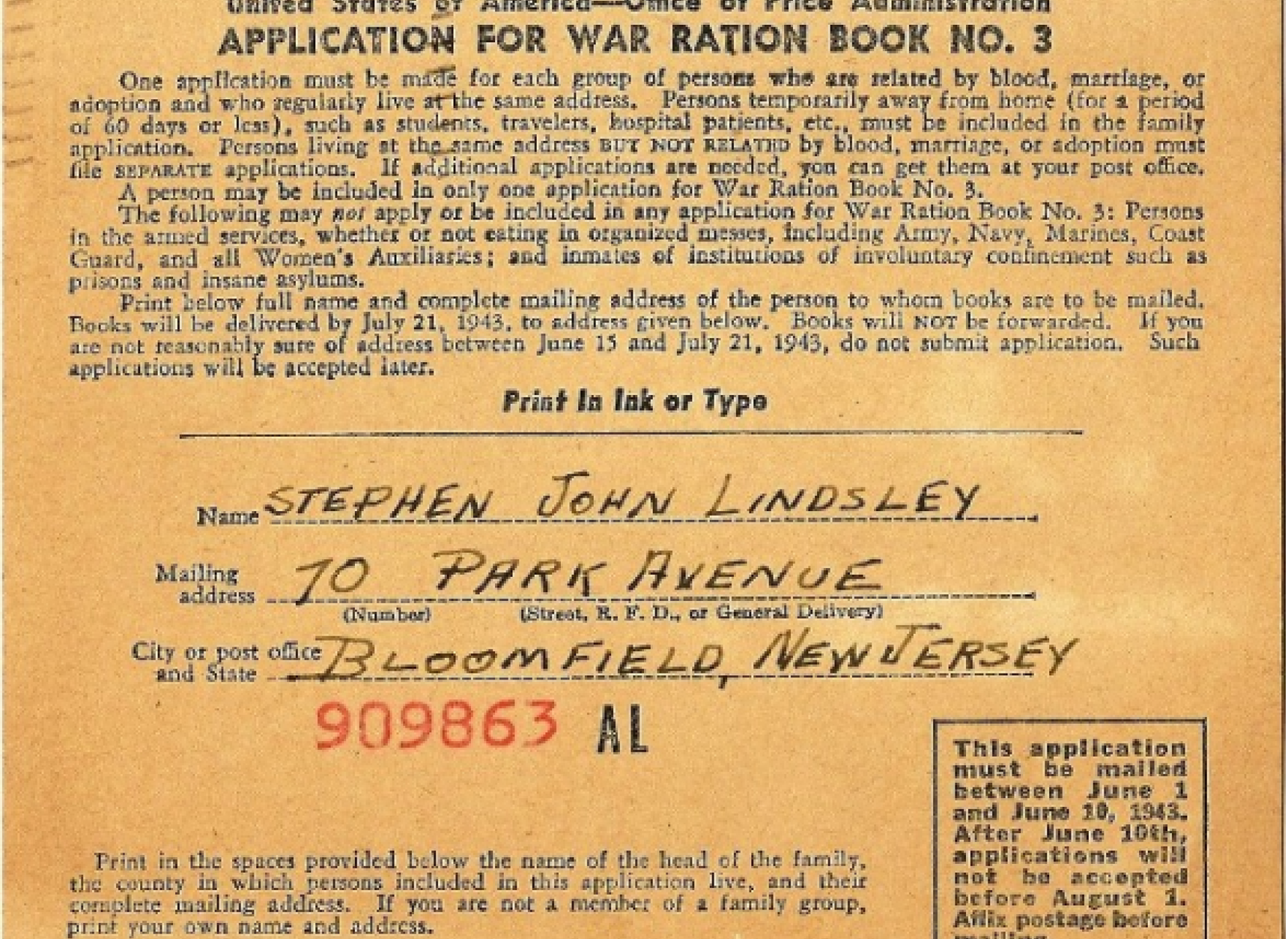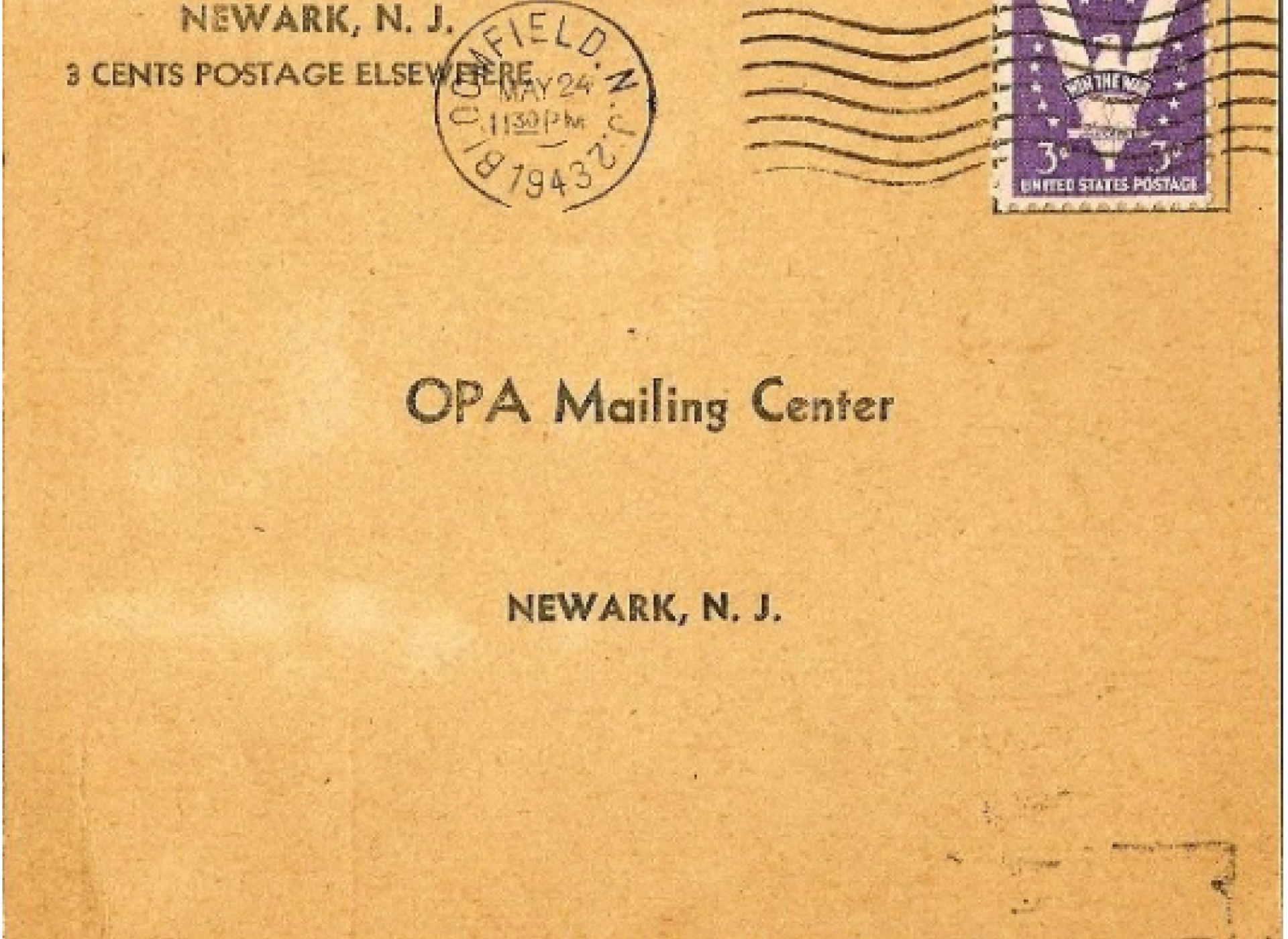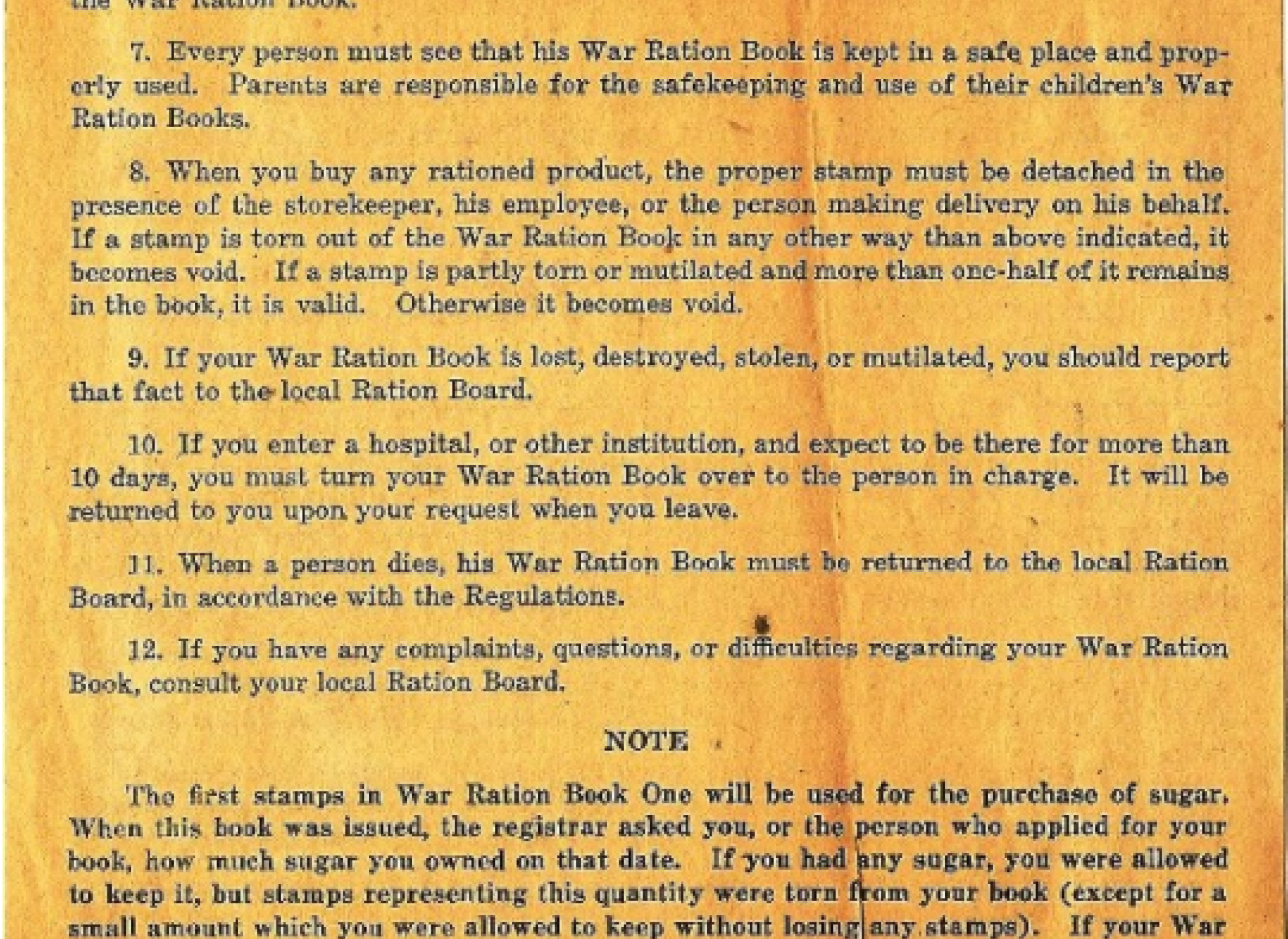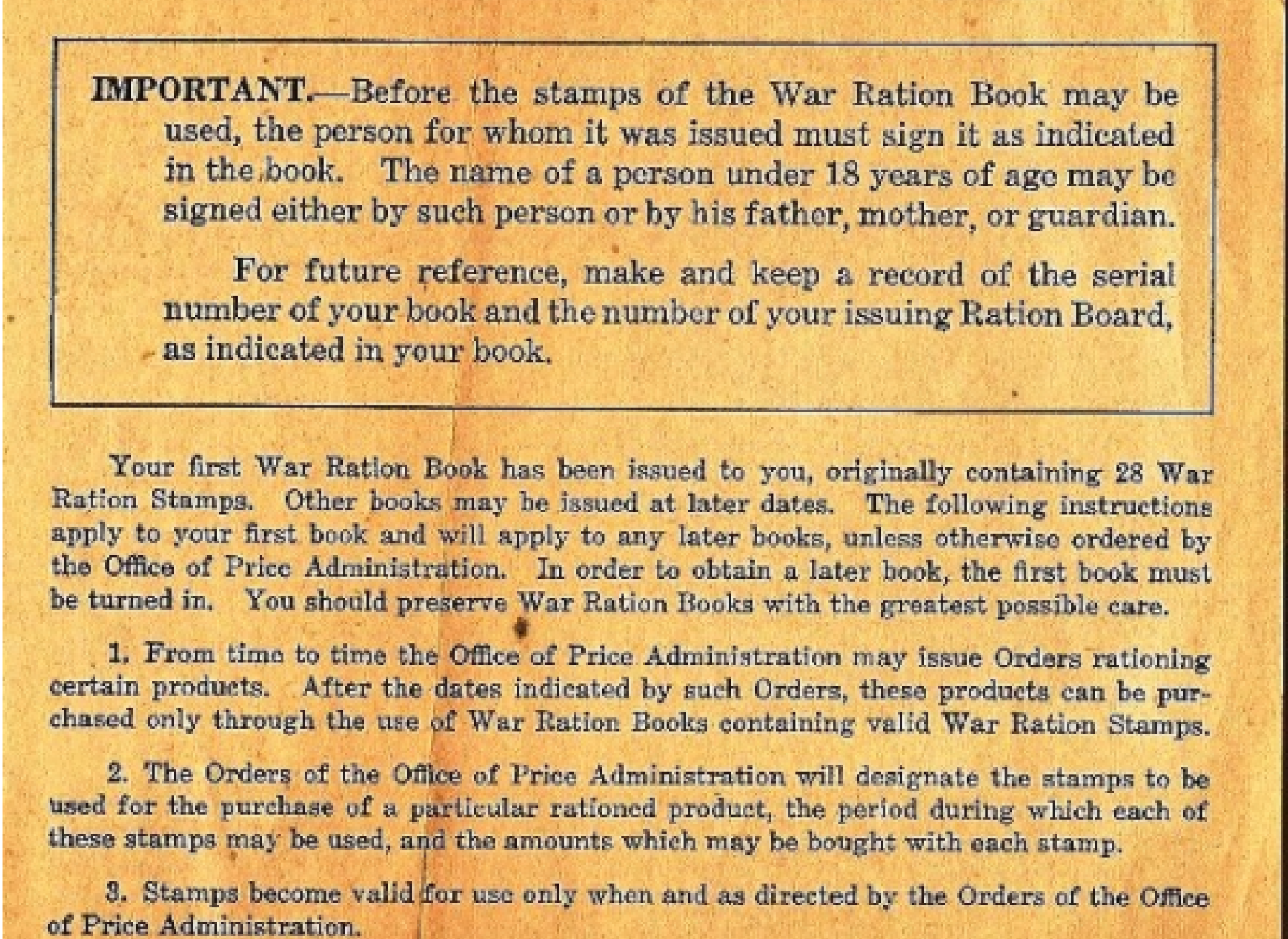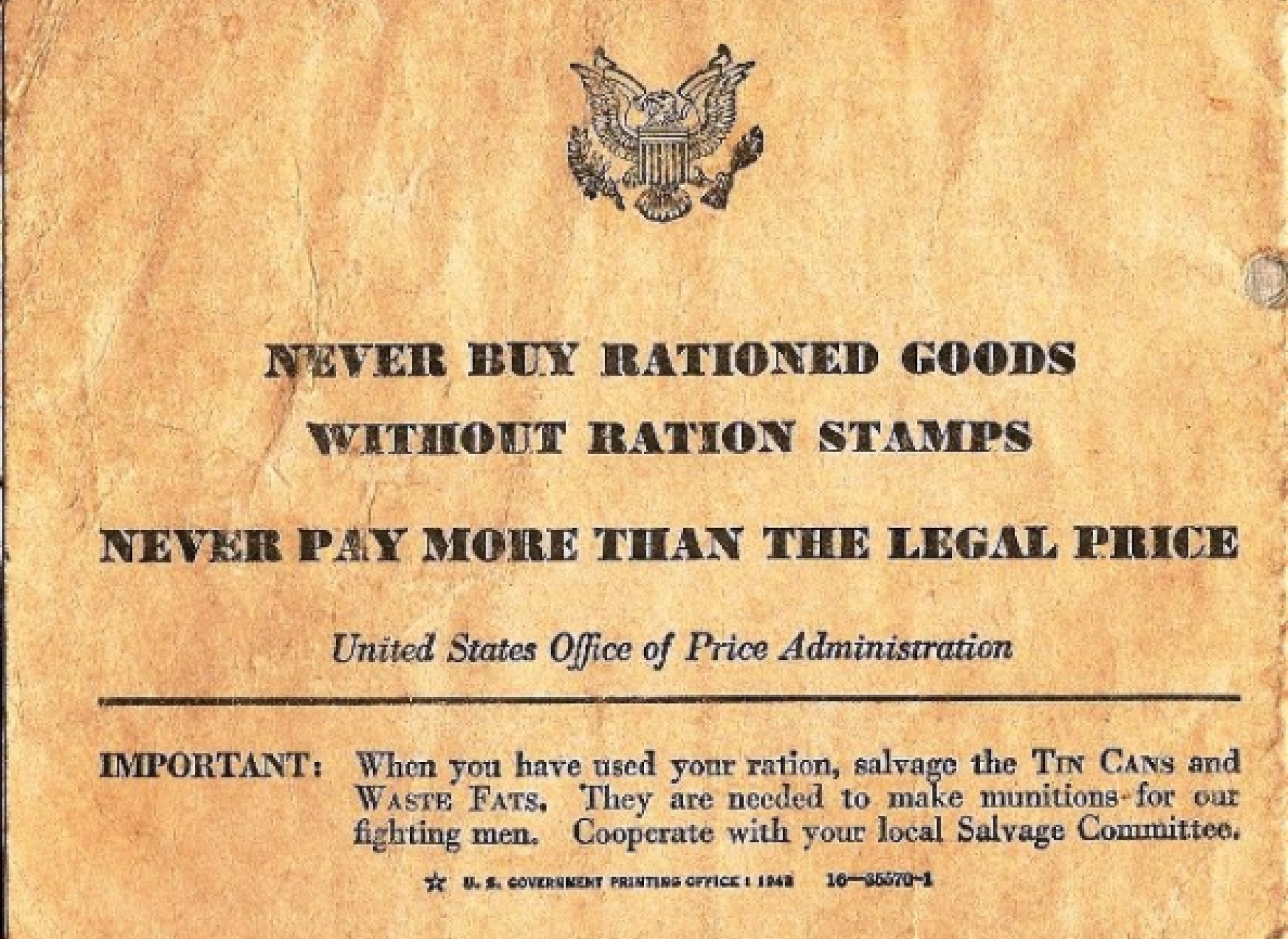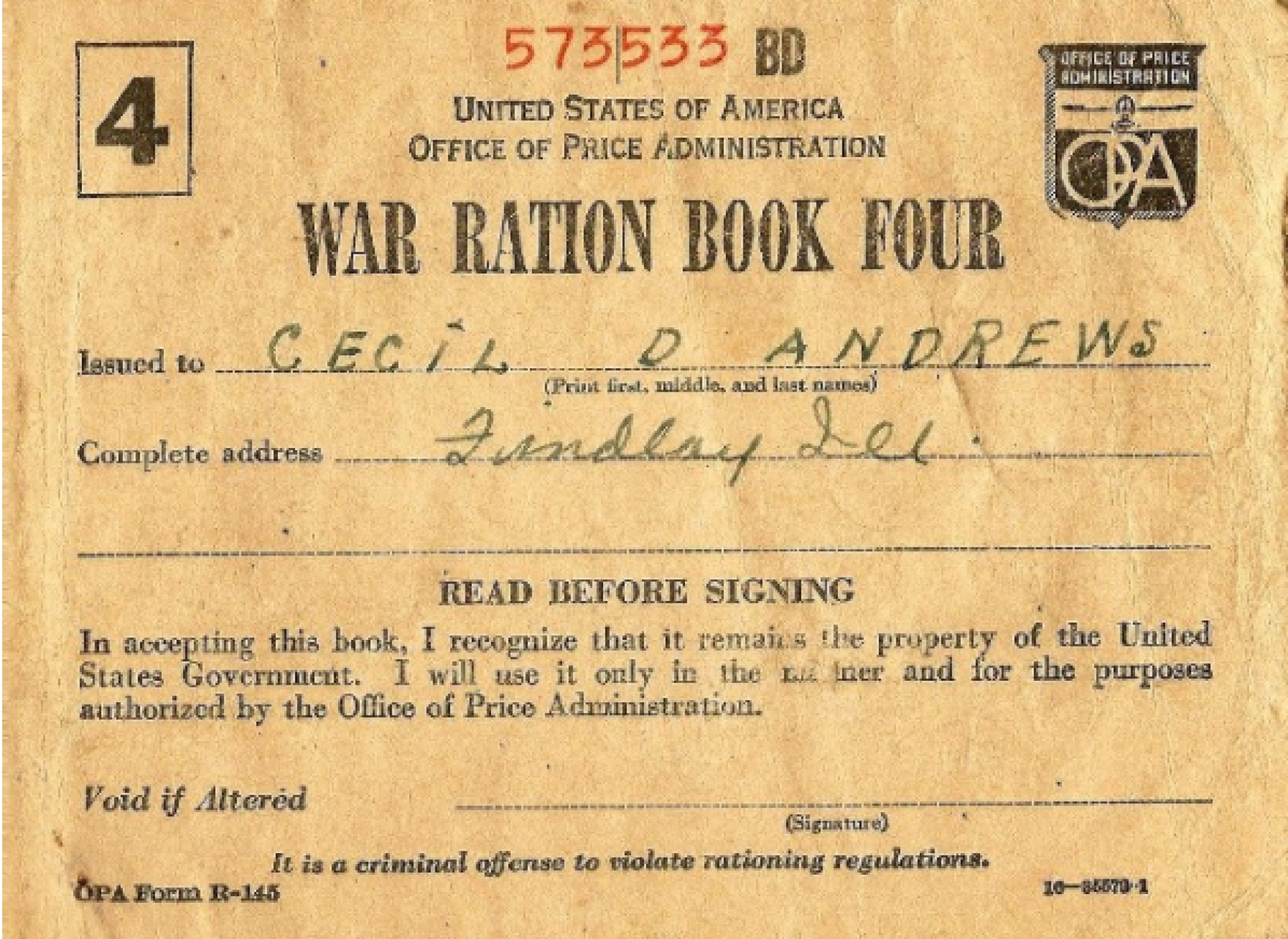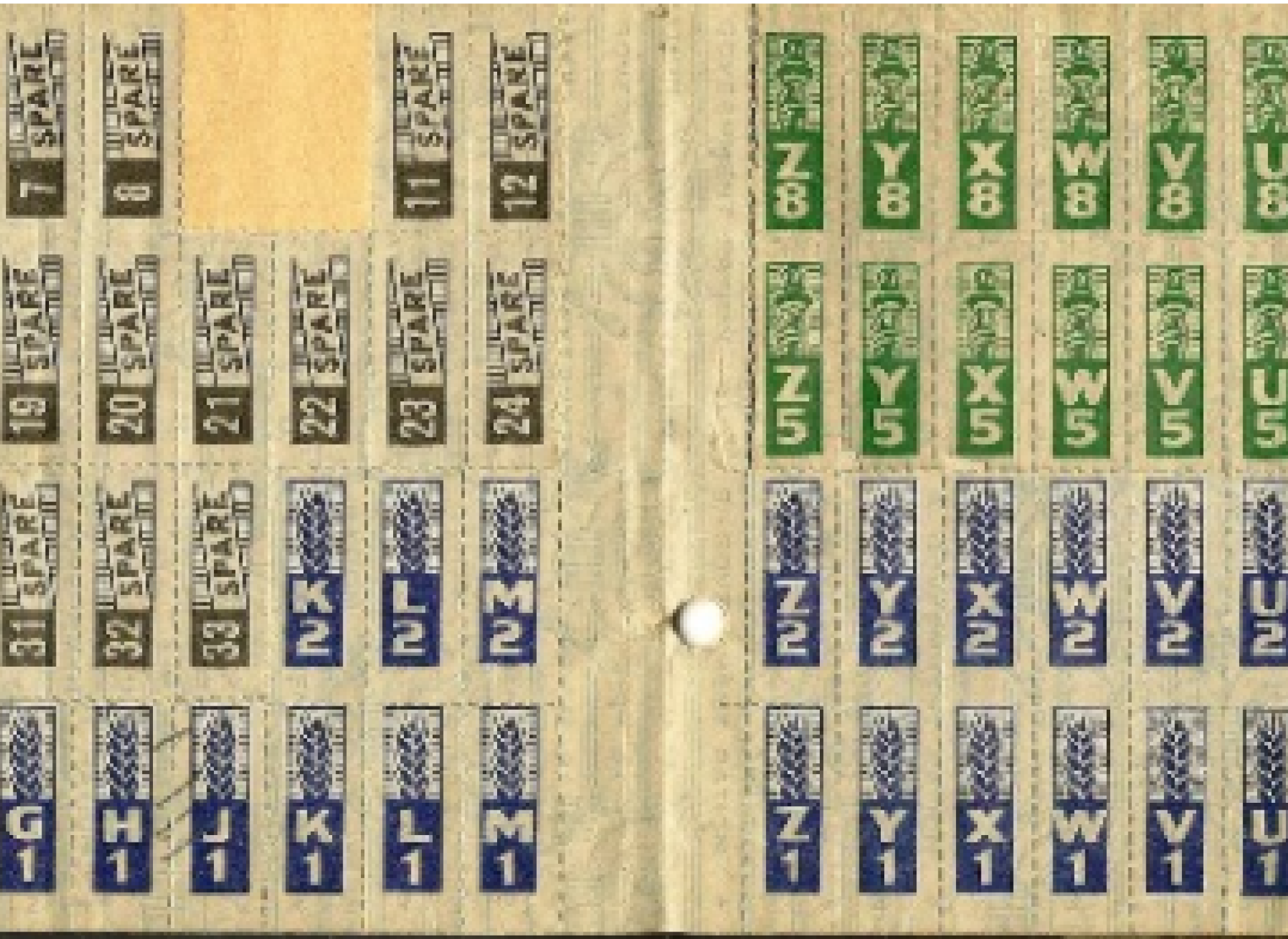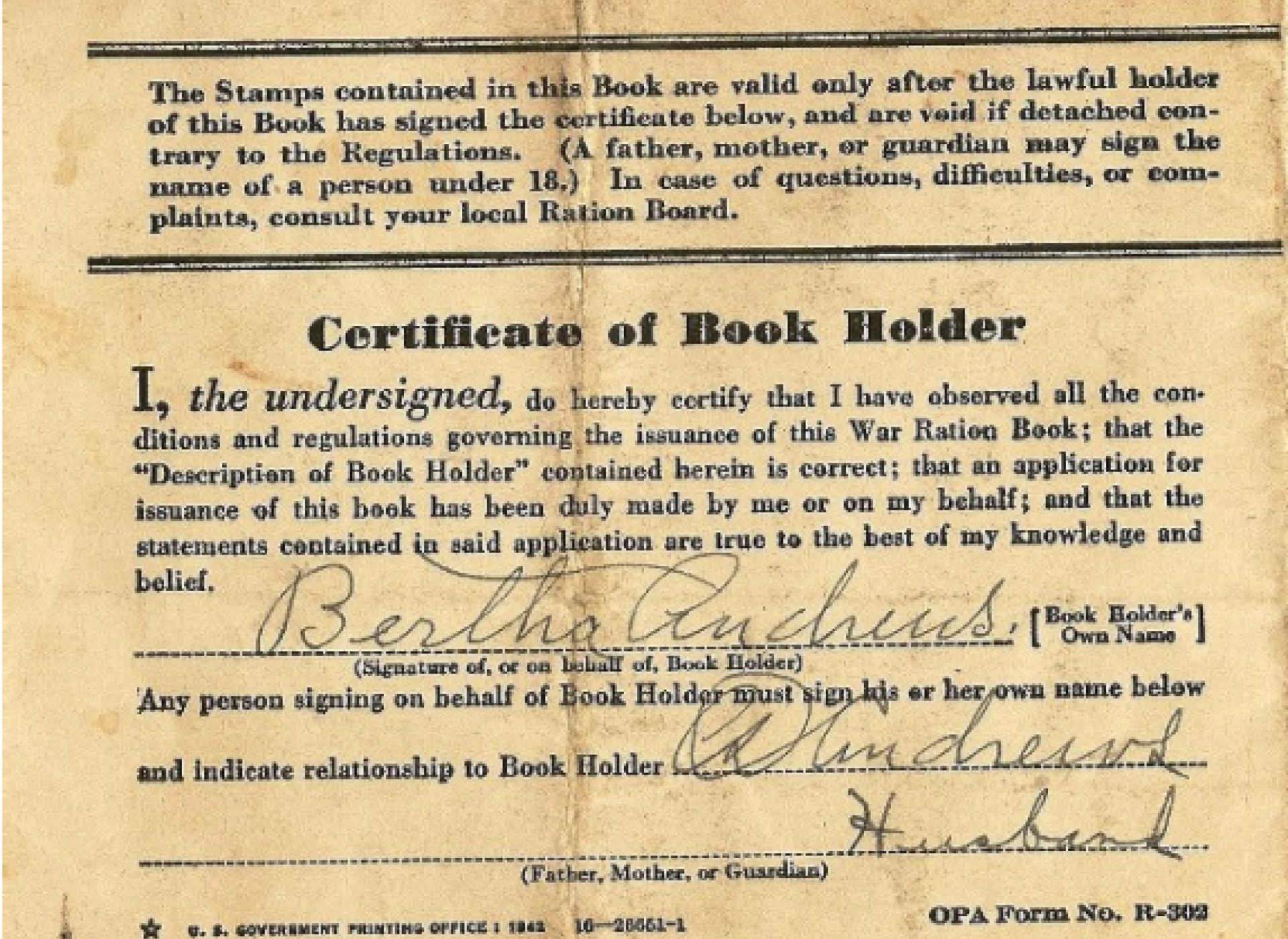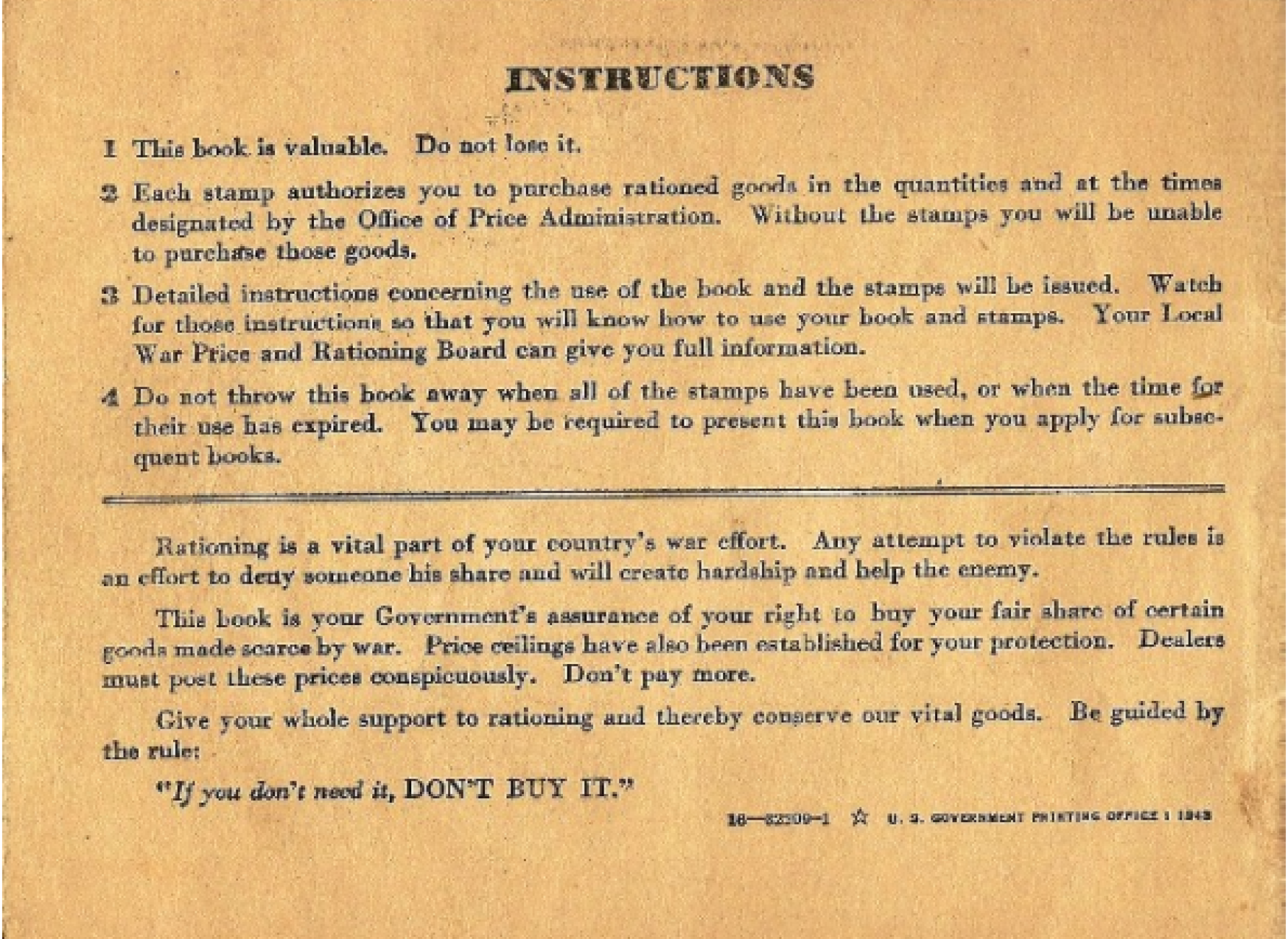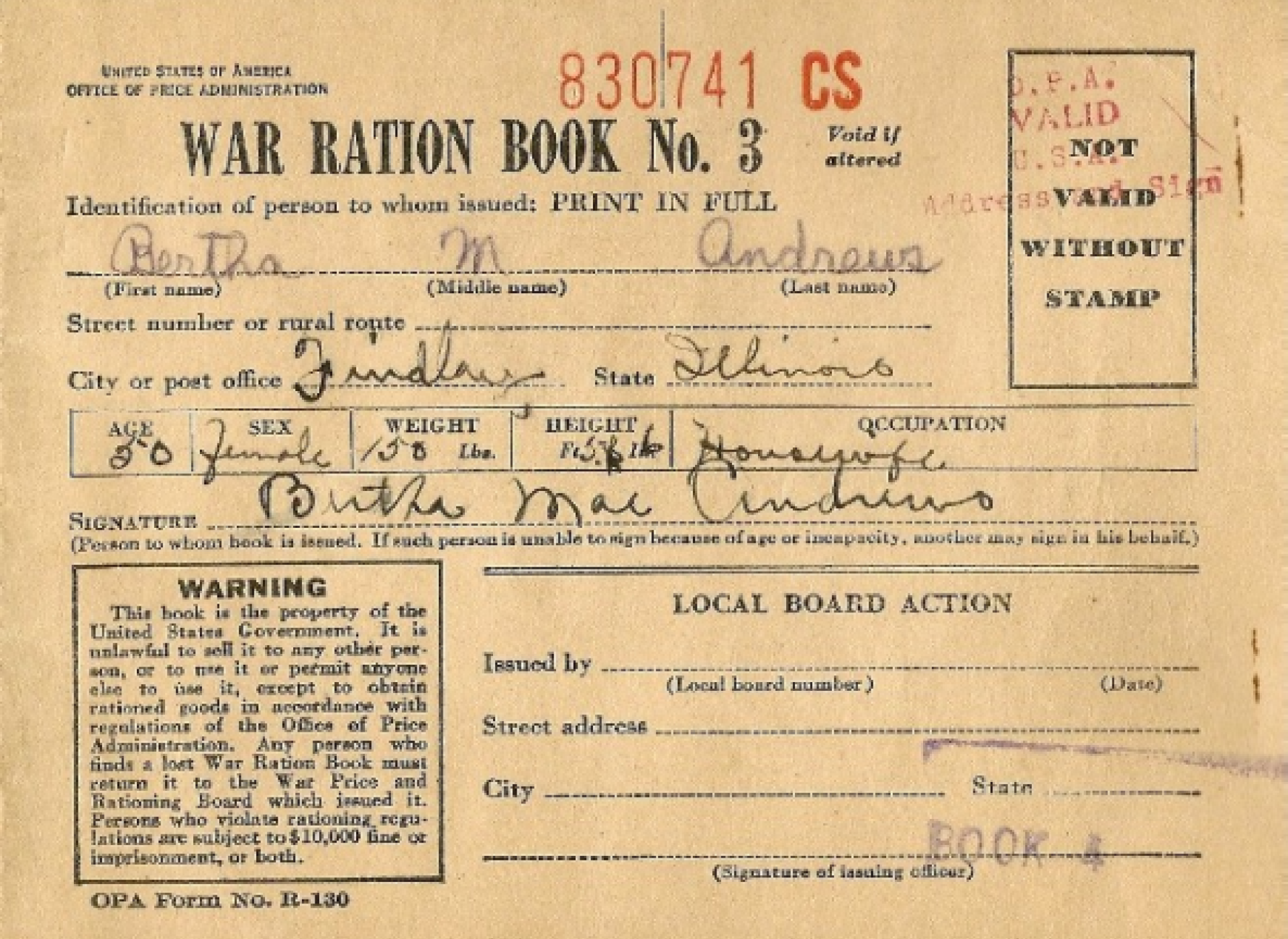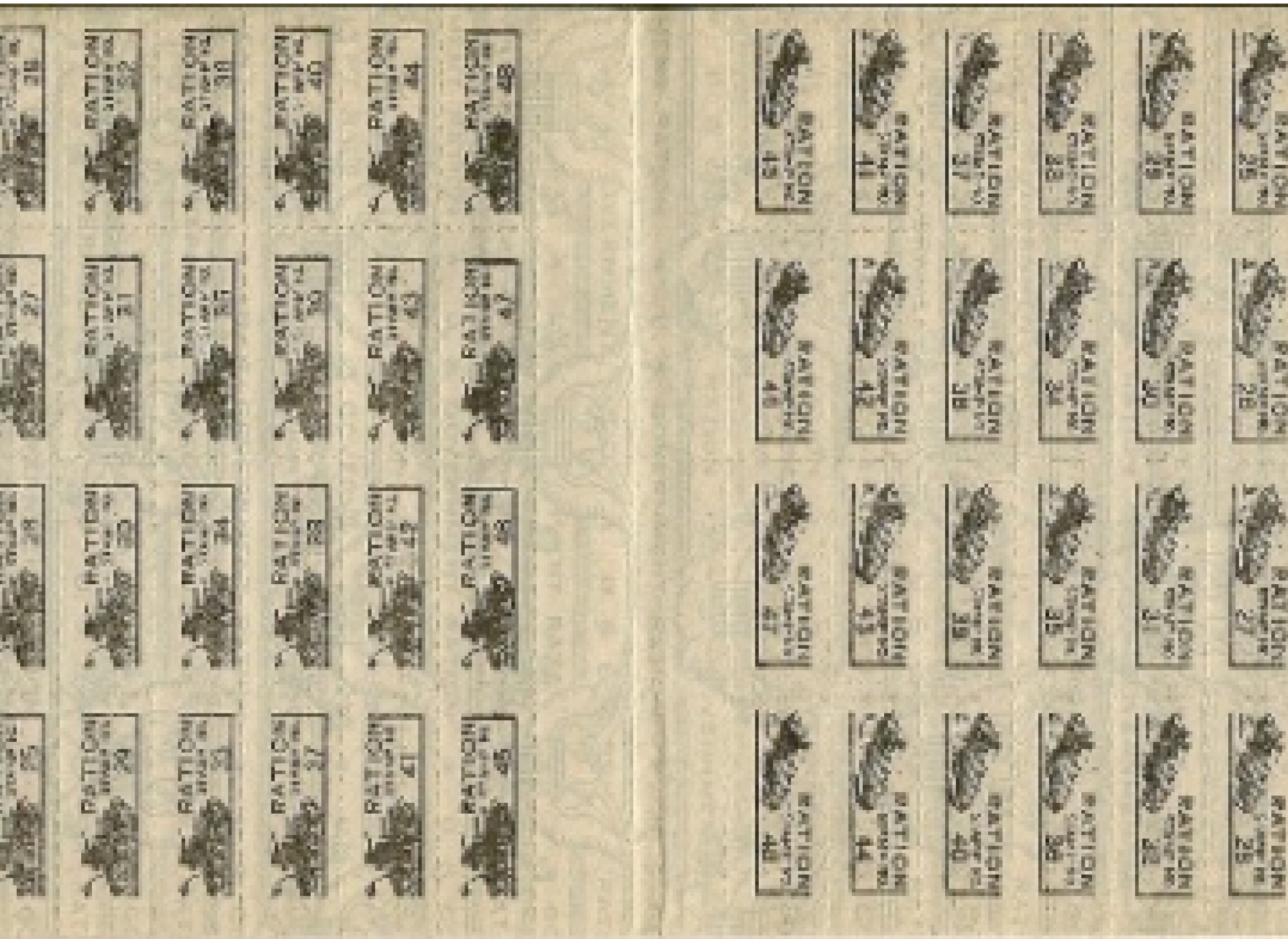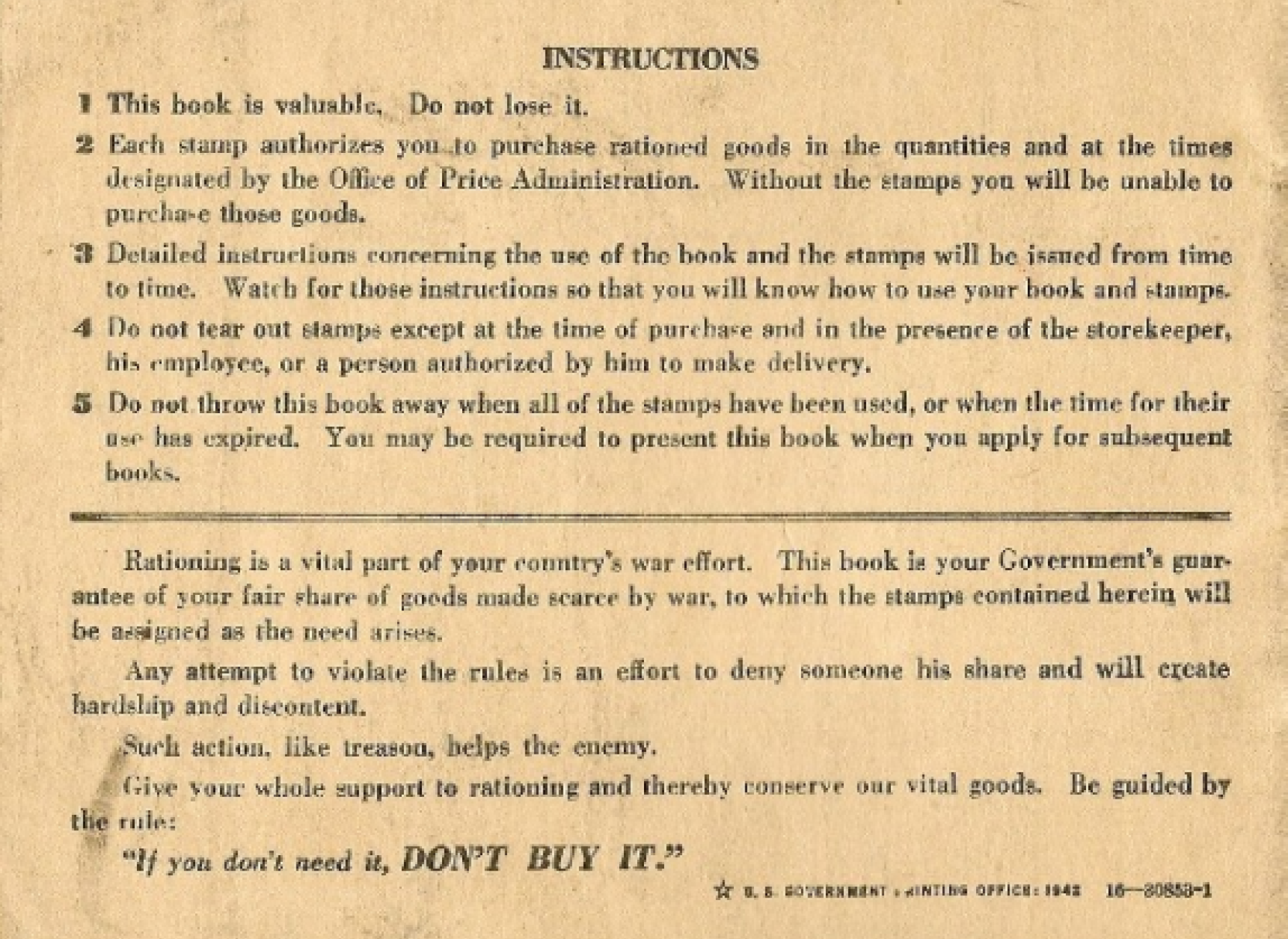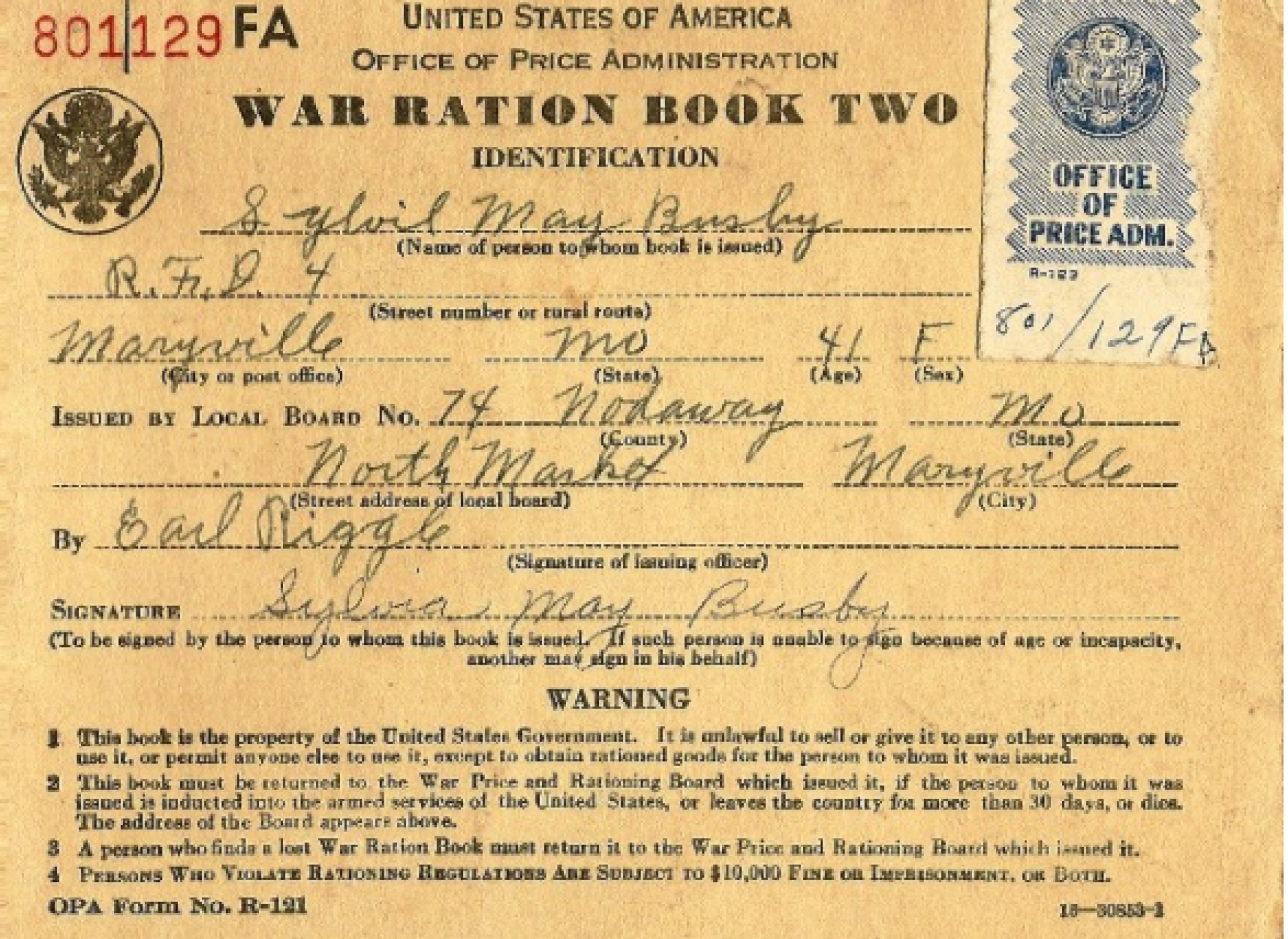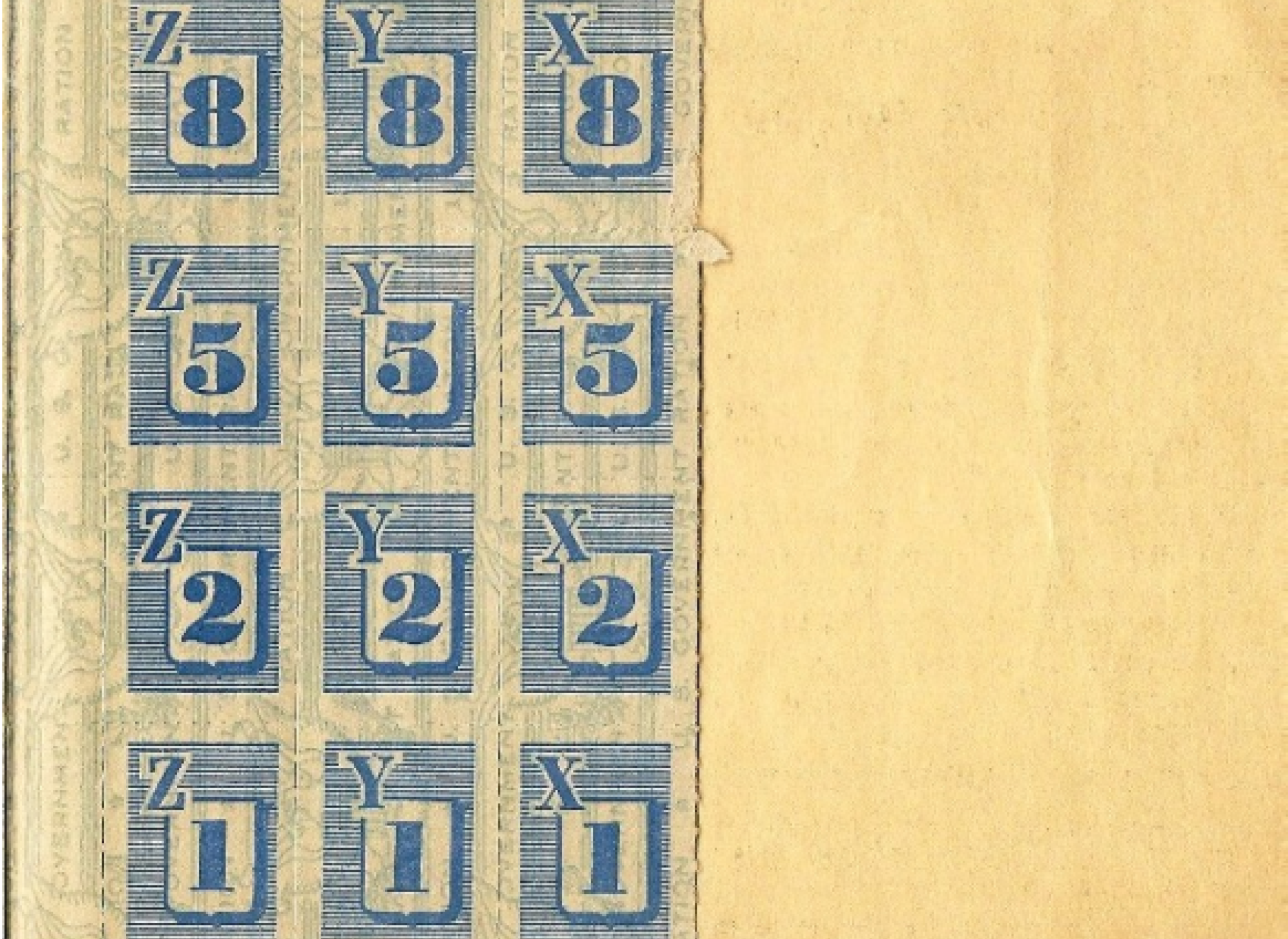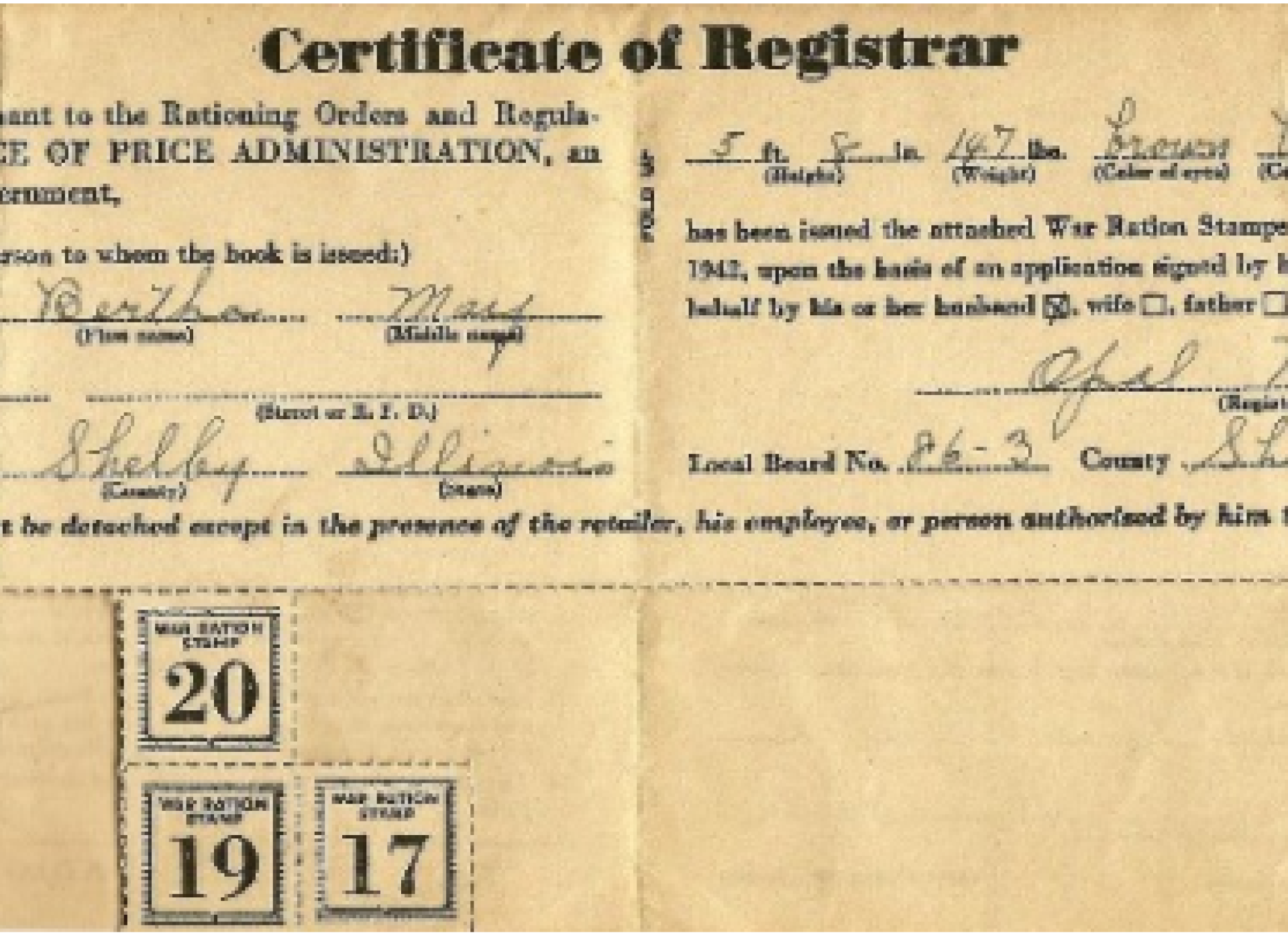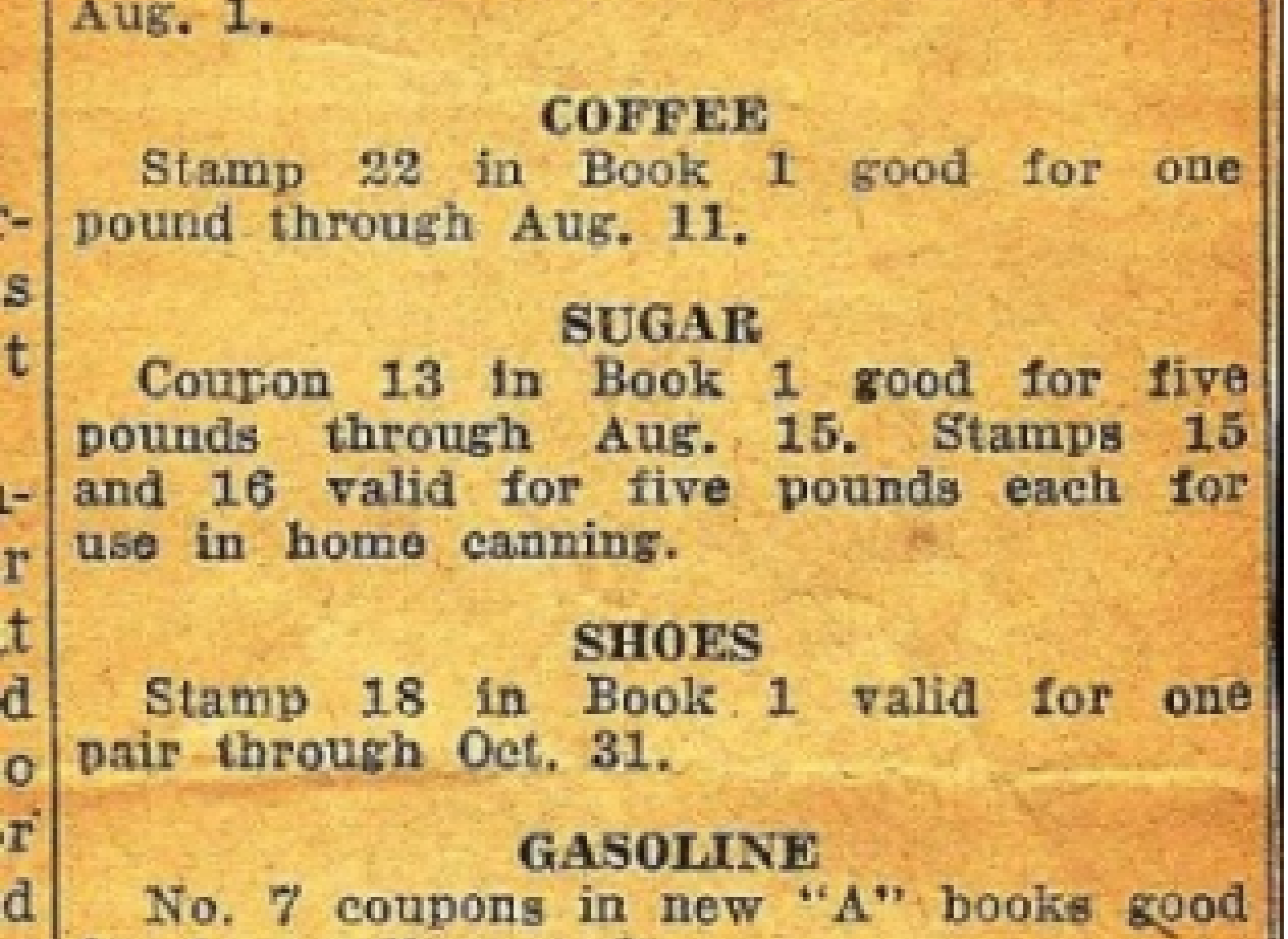Rationing for the War Effort
Ask anyone who remembers life on the Home Front during World War II about their strongest memories and chances are they will tell you about rationing. You see, the war caused shortages of all sorts of things: rubber, metal, clothing, etc. But it was the shortages of various types of food that affected just about everyone on a daily basis.
Food was in short supply for a variety of reasons: much of the processed and canned foods was reserved for shipping overseas to our military and our Allies; transportation of fresh foods was limited due to gasoline and tire rationing and the priority of transporting soldiers and war supplies instead of food; imported foods, like coffee and sugar, was limited due to restrictions on importing.
Because of these shortages, the US government’s Office of Price Administration established a system of rationing that would more fairly distribute foods that were in short supply. Every American was issued a series of ration books during the war. The ration books contained removable stamps good for certain rationed items, like sugar, meat, cooking oil, and canned goods. A person could not buy a rationed item without also giving the grocer the right ration stamp. Once a person’s ration stamps were used up for a month, she couldn’t buy any more of that type of food. This meant planning meals carefully, being creative with menus, and not wasting food. More than 8,000 ration boards across the country administered the program.
Let's take a closer look at some WWII Ration Books. You’ll notice that they change slightly throughout the war. The first two images explain how ration books were to be used. It could get a bit complicated. As a matter of fact, when a Gallup Poll on March 5, 1943, asked Americans, Do you understand how the food point rationing system works?, only 53% of men answered “Yes”; 76% of women answered “Yes” (why do you think that was?).
